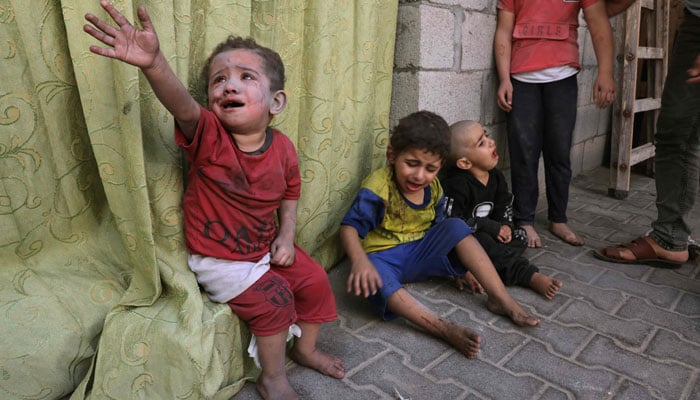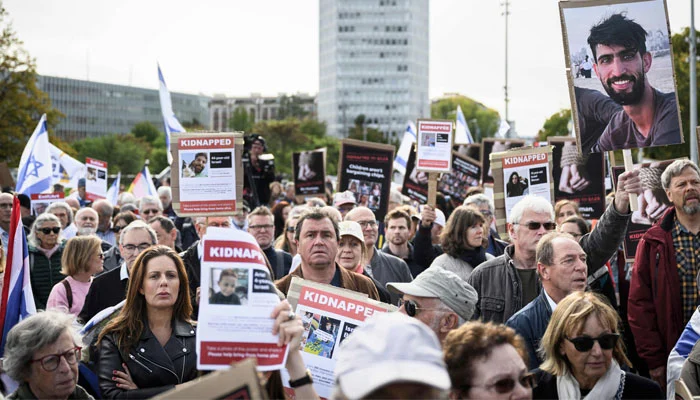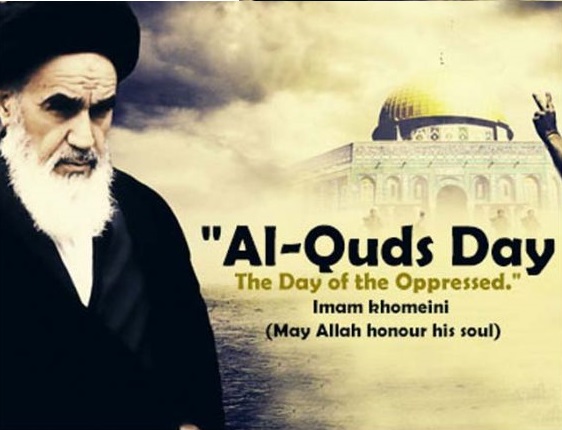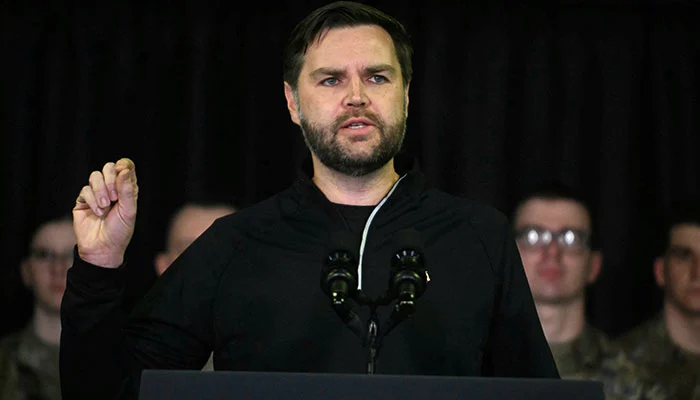Hamas on Monday night released two elderly hostages who were airlifted to an Israeli hospital to be reunited with family during the early hours of Tuesday, as the US demanded the release of 200 other captives before Gaza ceasefire talks are considered, AFP reported.
Early on Tuesday, a military helicopter brought freed hostages Nurit Cooper, aged 79, and Yocheved Lifshitz, aged 85, to a medical centre in Tel Aviv. Their release comes days after two other women — American citizens — were freed.
The office of Israel’s prime minister said Cooper and Lifshitz would receive medical treatment and be reunited with family. The women were wheeled into the facility on a stretcher and wheelchair, as relatives gathered nearby.
While Hamas released Cooper and Lifshitz on Monday citing “compelling humanitarian” reasons, after mediation by Qatar and Egypt, Israelis have been holding demonstrations in Tel Aviv, calling for a ceasefire with the release of all hostages.
Lifshitz recounted being bundled onto the back of a motorbike and stolen away to Gaza.
“They loaded me on a motorcycle sideways so I wouldn’t fall, with one terrorist holding me from the front and the other from behind,” she told local media.
“They crossed the border fence into the Gaza Strip, and at first they held me in the town of Abesan, which is near Be’eri. After that, I don’t know where I was taken.”
US general who fought Daesh appointed to advise IDF
A US official has revealed that Marine Corps Lt Gen James Glynn, former commander of Marine Forces Special Operations Command (MARSOC), will provide counsel to the Israel Defence Forces (IDF) as they prepare for a possible ground invasion in Gaza.

With extensive experience, including commanding MARSOC and combat experience in Iraq, Glynn is expected to offer advice on the “big picture” surrounding the Gaza conflict. The US official believes that Glynn’s expertise will help lead the IDF’s efforts to recruit and retain new Marines.
However, the National Security Council spokesperson, John Kirby, did not confirm Glynn’s position when asked about his role in advising the Israelis but instead stated that the Biden administration had sent a few relevant military officers to Israel.
According to Kirby, these military officers had the appropriate experience to advise on the sorts of operations that Israel is conducting and may conduct in the future. Kirby also confirmed that these officers would ask the hard questions, similar to the ones that have been asked of the Israeli counterparts since the beginning.
The US official said these included questions about how Israel planned to avoid civilian casualties, a number that has soared as the IDF bombards the coastal enclave, CNN reported.
Glynn’s role is separate from the special operations forces sent by Defence Secretary Lloyd Austin to assist Israel with intelligence and hostage rescue efforts. It is unclear when Glynn arrived or how long he is expected to stay.
As tensions continue to rise in the Gaza Strip, the US and its allies have been urging Israel to be transparent about its goals in the region. However, the US has also cautioned against a prolonged occupation of Gaza and placed significant emphasis on avoiding civilian casualties.
Despite the lack of clarity about Israel’s intentions, US officials believe that completely eradicating Hamas will be a difficult task.
While Israeli officials have publicly stated their intention to eliminate Hamas and its infrastructure, they have not discouraged the use of ground forces in Gaza during private discussions.
Ceasefire calls
In response to the worst attack in its 75-year history, Israel launched operation “Swords of Iron” — blockading Gaza and firing a near-continuous barrage of strikes against targets in the enclave to “erase Hamas”.
While Israel’s military has claimed success in “eliminating high-ranking commanders” and destroying Hamas infrastructure, humanitarian groups have warned that Palestinian civilians are paying too steep a price for the campaign.

Hamas fighters stormed into Israel from the Gaza Strip on October 7 and killed at least 1,400 people, mostly civilians, according to Israeli officials.
Israel says around 1,500 Hamas fighters were killed in clashes before its army regained control of the area under attack. Hamas also took 222 people hostage, among them elderly people and young children, according to the Israeli authorities’ latest count. The hostages also include dozens of foreigners.
Meanwhile, more than 5,000 Palestinians, mainly civilians and over 2,000 children have been killed across the Gaza Strip in relentless Israeli bombardments in retaliation for the attacks by Hamas, according to the latest toll from the Gaza health ministry.
Thousands of buildings have been levelled and more than a million people are believed to have been displaced in the besieged territory.
Gaza City resident Ayman Abu Shamalah was among the tens of thousands who heeded an Israeli warning to flee to south Gaza.
Despite the move, he told AFP that his pregnant wife, their three-year-old son and nine-year-old daughter were killed in an Israeli air strike on Rafah in southern Gaza.
“They put my son’s shattered body in a blue bag,” he said, sobbing.
Across Gaza, water, food and other basic supplies are running out. Only a trickle of aid is being allowed to cross into Gaza from Egypt. A few dozen trucks carrying food, medicine and water have entered Gaza since a US-brokered deal entered into operation on Saturday.
The United Nations estimates about 100 trucks are needed every day.
UN rights chief Volker Turk on Monday called for an “immediate humanitarian ceasefire” to relieve the suffering and allow the delivery of aid. But that suggestion was immediately slapped down by US President Joe Biden, who said any discussions about a ceasefire could only take place if Hamas frees all the hostages.
“We should have those hostages released and then we can talk,” Biden said when asked if he would support a “hostages-for-ceasefire” deal.
Unending Israeli bombardment on Gaza
Facing mounting public pressure, Israel has shown little sign of slowing its offensive.
On Monday the Israeli military said it had hit “over 320 military targets” overnight, some of the most intense bombing of the war to date.
A 19-year-old Israeli soldier was killed and three others wounded during a ground operation “to dismantle terror infrastructure… and locate missing persons and bodies”.
But the timing of a promised full-scale ground offensive remains unclear.
“We are well prepared for the ground operations in the south,” Herzi Halevi, the chief of general staff of the IDF told troops. “The Southern Command has quality operational plans. There are tactical, operative and strategic considerations that have provided additional time,” he said.
‘Nowhere else to go’
Chief among those considerations may be the labyrinth of tunnels and strong points that Hamas is believed to have developed to thwart any Israeli invasion. However, there are also fears about how Hamas’s allies around the Middle East would respond to a ground war.
The US-based Institute for the Study of War has reported an uptick in attacks on Israeli and US targets from Iranian-backed groups in Lebanon, Iraq and Yemen.
There are daily cross-border clashes between Israel and Lebanon’s Iran-backed Hezbollah militant group.
At least 41 people have been killed in Lebanon, according to AFP, including at least four civilians and a Reuters journalist.
Four people have been killed in Israel, including three soldiers and a civilian.
The pace of evacuations has increased on both sides of the border, with the UN saying nearly 20,000 people had fled villages in south Lebanon as the fighting rages.
Israel has also ordered the evacuation of thousands of people from a string of communities near its northern border. But not everyone has left, with some such as 62-year-old peach farmer Moshe Dadoush, refusing to go.
“I’d be lying if I said I wasn’t afraid. But I have to stay here,” he told AFP. “I wouldn’t leave for one simple reason: it’s here where I grew up. I have nowhere else to go but this country.”




